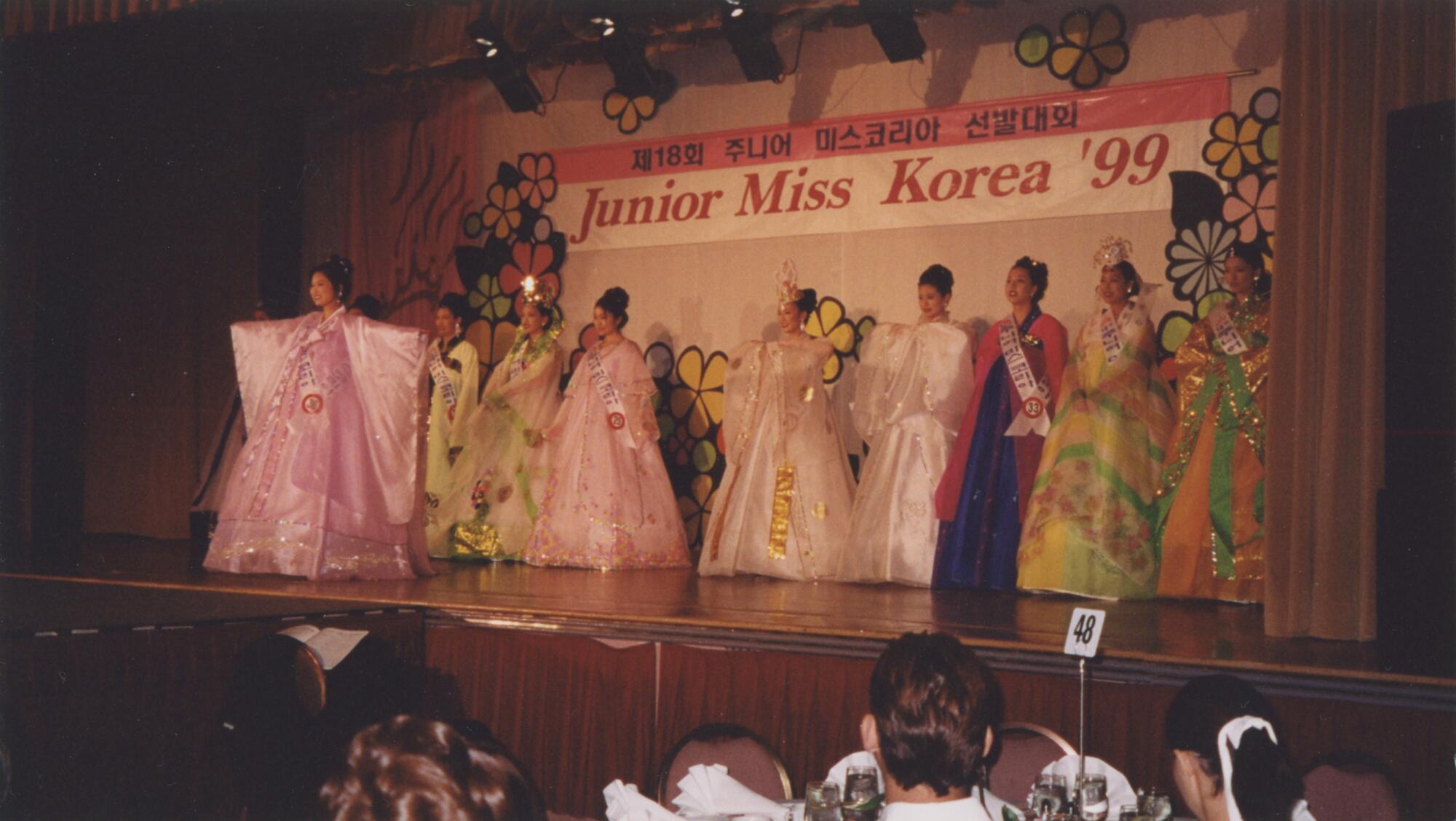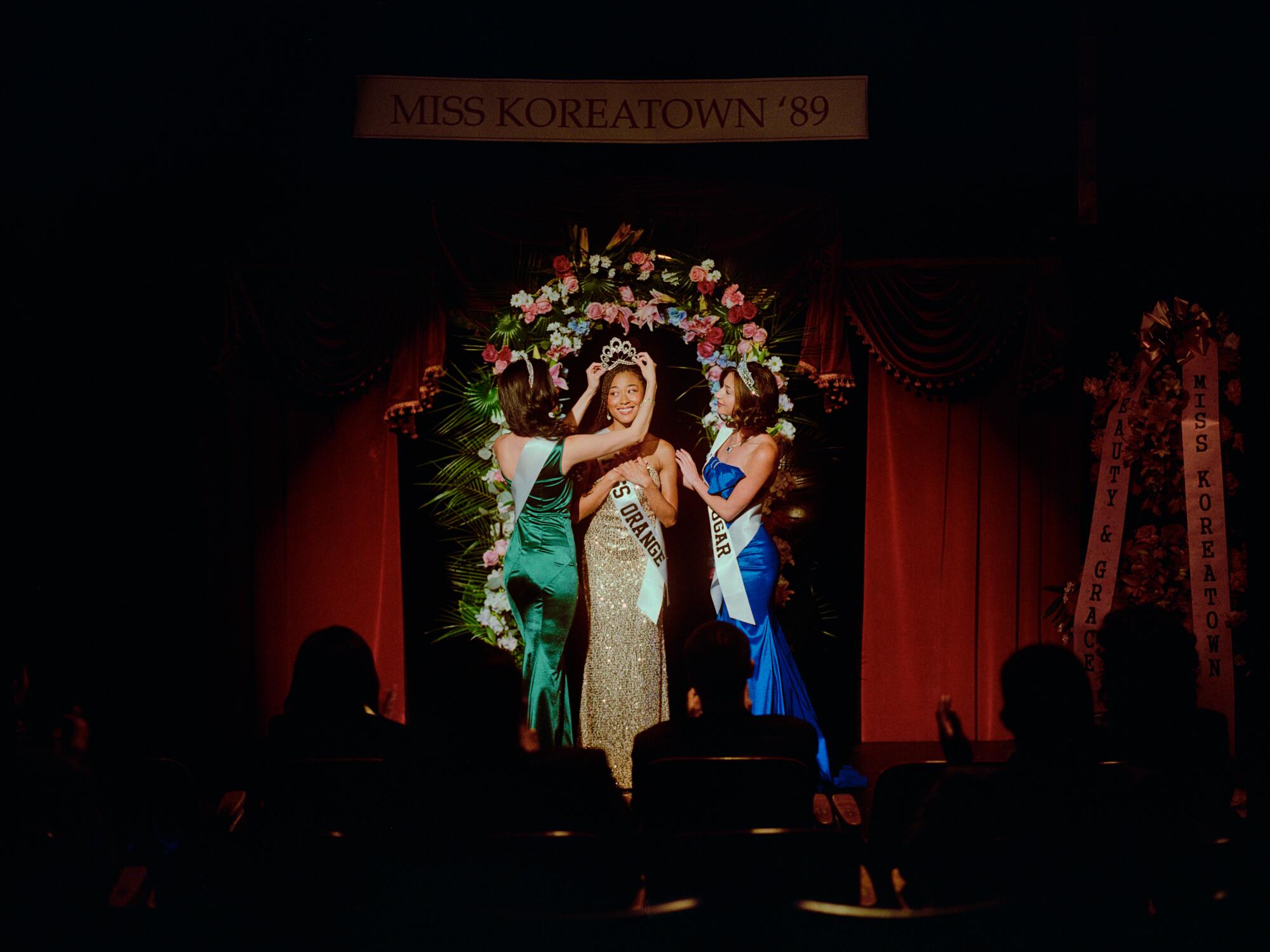Since early 2022, photographer Emanuel Hahn has been engaged on his sequence “America Fever,” by which he recreates and reimagines the tales of Korean immigrants to the U.S. over the twentieth century. His first sequence, “Jultagi,” used the Korean tightrope walker as a metaphor for the immigrant expertise. Different sequence have explored immigrant love, the methods by which Koreans adopted American methods of life, like automobile and motorbike tradition. His newest sequence, “Miss Koreatown,” dives into the historical past of magnificence pageants in L.A.’s Koreatown. On this as-told-to interview, Hahn shares the backstory.

“America Fever” is a staged-narrative picture and video sequence that mixes a number of Korean cultural histories and motifs with the parable of the American West. It was an concept that was at all times at the back of my thoughts as a third-culture child rising up in Singapore and Cambodia and all these different locations that weren’t my beginning nation or my mom’s nation, which is America and Korea, respectively. I used to be looking for my very own sense of my Korean identification, and that led me to a number of curiosity in Korean historical past, folklore and conventional parts that I used to be not conversant in. After I moved to the U.S., there was that added ingredient of being Korean and American, but in addition by no means having frolicked in both South Korea or America till I used to be 20 years outdated. It was concurrently an effort to succeed in again into my Korean heritage and make sense of my newfound Korean American identification.
I believe the staged narrative element got here as a result of I used to be very intrigued by staged narrative photographers like Gregory Crewdson and Alex Prager. There was simply one thing intriguing about constructing a scene to convey your concepts, and world-build in order that you would create this universe that was fully your individual. I made 4 to 5 photographs in early 2023 for a bunch present in New York with a Google Fellowship, after which I stored making photographs by myself. This yr, I made this work “Miss Koreatown.” The sequence follows an arc — it’s virtually like this curve that goes up after which down: It’s the immigrant arrival, then the wrestle, then the thrill and ecstasies, but in addition the reckoning of what it’s prefer to be Asian American this present day, which, sure, there’s integration, however there’s additionally nonetheless a lot othering and questioning if there’s a spot for you.

Blair wears 18-karat white gold classic Edwardian diamond ring by IO Collective, personal assortment and classic pearl earrings by Julia Vaughn.


Minji wears classic emerald earrings by Swarovski and classic emerald bracelet by Julia Vaughn.
The sweetness pageant sits in that pleasure and ecstasy section, however with an asterisk, as a result of I’m nonetheless complicating the concept of the wonder pageant by way of utilizing mixed-race contestants. They’re all part-Korean: Minji is white and Korean, Blair is Black and Korean, and Ari is Puerto Rican and Korean. Traditionally, mixed-race Koreans have been ostracized in Korean tradition, and within the U.S. much less so, however nonetheless, there was this sense that they didn’t actually really feel like they belonged in both tradition. When you have been Black and Korean in post-war in Korea, you had a very robust life, as a result of there was racism towards Koreans, each from American GIs and from Korean tradition. The sweetness pageant is a celebration of being Korean, nevertheless it’s additionally redefining what magnificence is towards the backdrop of a number of Korean magnificence pageants, which regularly favor tremendous pale, porcelain pores and skin. I’ve mainly shifted the context to L.A., which is among the most various locations on Earth, and simply the truth that, in L.A., we maintain house for range.

Ari wears 18-karat white gold diamond tennis necklace with a 20-carat tanzanite diamond pendant.




The sachets additionally nod to the phases of immigration: Miss Sugar refers back to the sugar plantations in Hawaii, which was one of many first locations for Korean laborers. After which from there, a number of the laborers moved on to California, the place they labored on citrus groves — in order that’s Miss Orange. Then, Miss Cabbage is that this later group, the place Korean immigrants that got here within the ‘70s and wished to make kimchi, so that they began rising cabbage extra. I’m utilizing wardrobe and prop particulars to nod to Korean historical past.
There was once a number of Korea Day celebrations. There have been the wonder pageants, in addition to a parade in Koreatown within the ‘80s and ‘90s. Quite a lot of it was organized by totally different establishments inside Koreatown and small companies to have fun Korean tradition and heritage. It was one of many few occasions the place the group got here collectively to simply have fun their identification. I believe it had the impact of sharing Korean tradition with the remainder of America, as a result of again within the ‘80s or ‘90s, a number of People didn’t find out about Korea outdoors of the context of the Korean Conflict. That was the primary time that individuals would hear about or be taught in regards to the hanbok, which is the Korean costume, or Korean meals. It was a manner for folks in Koreatown to share their tales, after which, along side these, there have been Miss Koreatowns.


(Courtesy of Leehwa Weddings & Hanbok)
It’s very exhausting to trace down imagery, however I did see some by way of asking small enterprise homeowners who had archival pictures and doing analysis on-line. The Miss Koreatowns have been usually very small endeavors. It wasn’t a grand factor in any respect, and there’s simply one thing so DIY about it that I discovered actually endearing. There have been additionally Miss California pageants, the place you had totally different contestants coming from North and SoCal, San Luis Obispo, and all through California, the place they’d meet in Koreatown, and I assumed that was cool too, chatting with the variety of Korean experiences even inside California. This is part of Koreatown historical past that has not been archived and shared nicely. I wished to speak about it a bit bit, and put my lens of cultural historical past on it.
—As instructed to Elisa Wouk Almino

Minji, Blair, and Ari put on classic clothes.

Pictures & Manufacturing Emanuel Hahn
Fashions Blair Kim, Minji Marie, Ari Rivera
Wardrobe Juliet Vo
Set Design Victoria Foraker
Picture Assistant Carly Hildebrant
Wardrobe Assistant Paige LaViolette
Make-up Daphne Chantell Del Rosario
Hair James Gilbert
Manufacturing Coordinator Crystal Rivera
Retoucher Jamie Kang
Archival pictures courtesy of Leehwa Weddings & Hanbok








